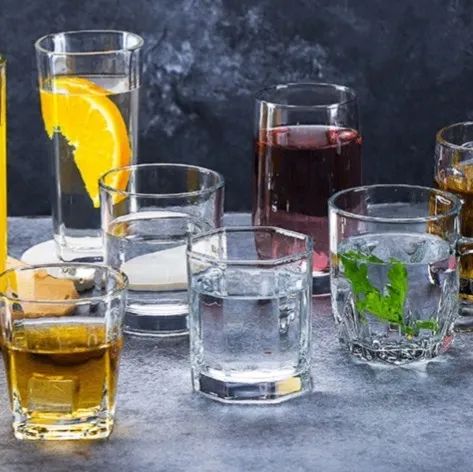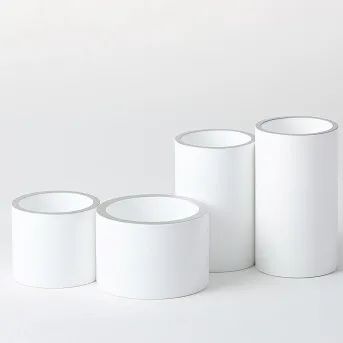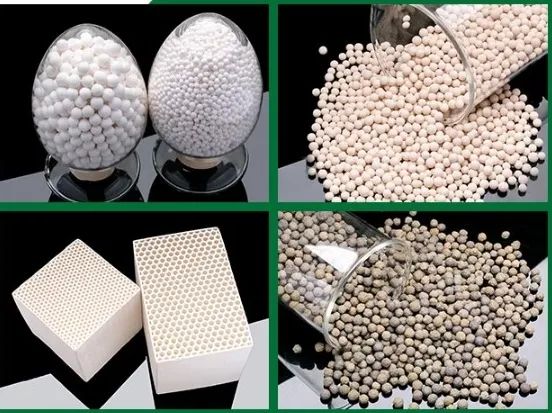Daily use ceramic dinnerware is the oldest and most widely used traditional ceramic product among a variety of ceramic products.
01
What is ceramic?
“Ceramics” is a generic term for “ceramics” and “porcelain”, which is an indispensable material and product in human production and life, and has a millennial history in the history of human production. Porcelain represents one of the great inventions of our Chinese nation: the first baked porcelain was made of ceramic. Traditionally, the term ceramic refers to all hard substances formed through a series of physical and chemical reactions with clay as the main raw material and other natural mineral raw materials through a series of physical and chemical reactions under the condition of correct dosage, crushing , molding and high temperature roasting.
The term ceramic used internationally has no uniform borders in different countries. In some European countries, the term ceramic refers to a wide range of ceramics, including various ceramics. The German Ceramics Association argues that “ceramics is a branch of the chemical industry or chemical manufacturing process, including the production or further processing of ceramic materials and tools into ceramic products.” The United States, Japan and other countries consider the term ceramic to be complete with various silicate materials The generic term for non-metallic inorganic materials, including products, not only refers to ceramics, but also includes concrete, glass, enamel and other materials .
02
Difference between ceramic and cermet
The English word cermet or ceramet is made up of ceramic (ceramic) and metal (metal). Cermet is a composite material and its definition varies slightly from time to time. how:
Some are defined as a material composed of ceramic and metal, or a composite material of ceramic and metal obtained from powder metallurgy.
“Ci Hai” is defined as: a material of metal and ceramic raw materials that combines some advantages of metal and ceramic, such as: B. the toughness and flexural strength of the former and resistance to high temperatures, high strength and the oxidation resistance of the second.
The American ASTM Technical Committee is defined as: a heterogeneous composite material consisting of a metal or an alloy and one or more ceramic phases, the latter representing approximately 15% to 85% by volume, and at the manufacturing temperature , The solubility between the metal and ceramic phase is quite low.
Strictly speaking, cermets describe a class of materials in which both the metallic and ceramic phases in composite materials have interfaces in three-dimensional space.
The cermet not only maintains the high strength, high hardness, wear resistance, high temperature resistance, oxidation resistance and chemical stability of ceramic, but also has good toughness and plasticity of metal. Since there is no clear distinction between the two technical terms “cermet” and “hard alloy”, a material-specific distinction is difficult: from the point of view of material composition, “hard alloy” can be assigned to “cermet”, IE . Campbell classifies “tungsten carbide” as “cermet”.
03
What types of ceramics are there?
There are many types of ceramic products. From different points of view, some are classified according to the structure and basic physical properties of their materials, others according to their raw materials, compositions or uses. There is no single plan in the world. There are currently two other common classification methods.
1. Classified according to the concept and use of ceramics
Ceramics can be divided into ordinary ceramics and special ceramics depending on the term and use. Ordinary pottery is traditional pottery in the concept of pottery. This type of pottery is the most common and widely used pottery in people’s life and production. Porcelain, electro-porcelain and other industrial ceramics. The ceramic materials and products included in the generalized concept of ceramics other than ordinary ceramics are special ceramics. Special ceramics are ceramic products used in various modern industries and at the forefront of science and technology, some countries call them “precision ceramics” and are divided into structural ceramics and functional ceramics based on their properties and uses.
2. According to the physical properties of the green body
It is a more scientific classification method for classifying ceramic products according to the nature of the green pulp, i.e. the difference in the structure of the green pulp and its corresponding basic physical properties. This classification method divides all ceramic products into two categories based on the structure of the ceramic paste and the density of the marked green paste: ceramic and porcelain.
Ceramic is a kind of free-body structure and low-density ceramic product.It usually has a certain rate of water absorption, and the section is rough and opaque, without light transmission, and it is silent or rough when plugged; it has a certain degree of light transmission and the section is similar to a stone or a shell.
As a material in contact with food, everyday ceramic dishes are closely linked to our life. My country has formulated safety standards and tests for materials in contact with food. The most important for everyday ceramics are:
——GB 4806.4-2016 “National food safety standard – Ceramic products”
——GB 4806.3-2016 “Standard enamelled products for national food safety”
——GB 5009.156-2016 “National standard for food safety – Materials and products in contact with food – General rules for pre-treatment methods for migration tests”
——GB 31604.24-2016 “National standard for food safety – Materials and products in contact with food – Determination of cadmium migration”
——GB 31604.34-2016 “National standard for food safety – Materials and products in contact with food – Determination of lead migration”
04
Precautions for the import declaration of ceramic dinnerware for daily use
According to the Import and Export Tariff of the People’s Republic of China (2020) and the Notes on Goods and Articles of the Import and Export Tariff (2017), porcelain means hard-paste porcelain, soft-paste porcelain, bisque porcelain (including white porcelain) and bone China. All these porcelains are almost entirely vitrified, hard, opaque even if unglazed, white or artificially colored, translucent (unless they are very thick) and have a clear knocking sound.
Hard-paste porcelain consists of kaolin (or kaolin-like), quartz, feldspar (or dense feldspar) and sometimes calcium carbonate. The product has a colorless and transparent glaze, which is baked and simultaneously melted with the porcelain mass.
Soft-paste porcelain contains less alumina but more silica and flux (eg feldspar). Bone china contains less bauxite and mainly calcium phosphate (such as calcium phosphate derived from bone ash), the product is fired at a lower temperature than hard-paste porcelain and is translucent. The glaze is usually further baked at lower temperatures, allowing for a wider range of underglaze decorations.
Bisque porcelain is unglazed porcelain, with Balus porcelain (also known as Carrara porcelain) being a special fine-grained pale yellow porcelain containing more feldspar and often resembles in appearance the marble produced on the island of Balus, from whose name.
Ceramic products other than porcelain include:
1. Porous ceramic
Unlike porcelain, porous ceramics are opaque bodies permeable to liquids, easily scratched with iron tools, and adhere to the fractured surface. Such ceramics include:
1. Pottery made of common ferrous and calcium-rich clay (brick earth) with a dull, earthy texture, usually brown, red or yellow.
3. A wide range of white or colored pottery (fine items, floral items, white and blue glazed Dutch items, etc.). It is inherently porous and must be glazed (using a clear or opaque glaze, such as white or other colored metal oxides) to be waterproof. Fine pottery, etc., is obtained by mixing finely sifted clay with water, and the clay particles are fine and fine and are fired at a higher temperature than ordinary clay pottery. Its clay is not fully vitrified, so it differs from porcelain.
2. Terracotta
Unlike porcelain, stoneware can be glazed (matte) or semi-glazed, although it has a dense texture, high hardness and scratch resistance with a steel tip, as it is matte and generally only partially glazed. The color is gray or light brown due to the impurities in the clay used. Stoneware is usually glazed.
3. “Semi-porcelain” or “imitation porcelain”
Some products, called “semi-porcelain” or “fake porcelain”, have been adapted, decorated and glazed to give them the appearance of porcelain. They are neither completely opaque like ceramic nor truly translucent like porcelain. These products are only slightly translucent in thin areas (e.g. the bottom of a cup) and differ from true porcelain in their grainy, dull and non-fractured surfaces. The product is porous under the enamel and the fractured surface is sticky. In addition, these products can be easily scratched with a steel knife. However, it should be noted that some soft-paste porcelain can simply use steel to make marks. The aforementioned “imitation porcelain” products are not classified as porcelain.
Post time: Aug-08-2022












